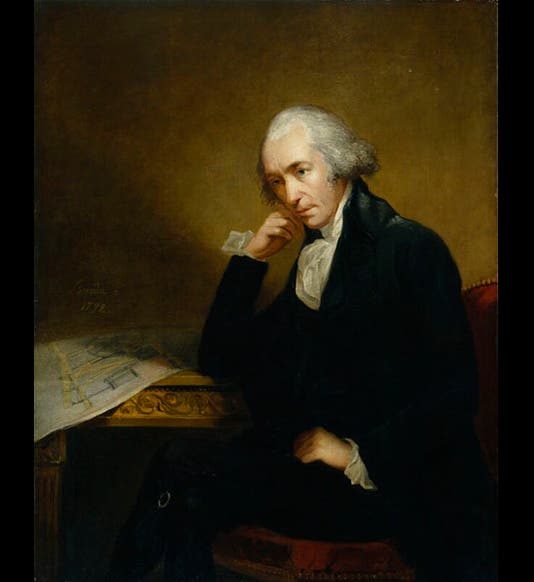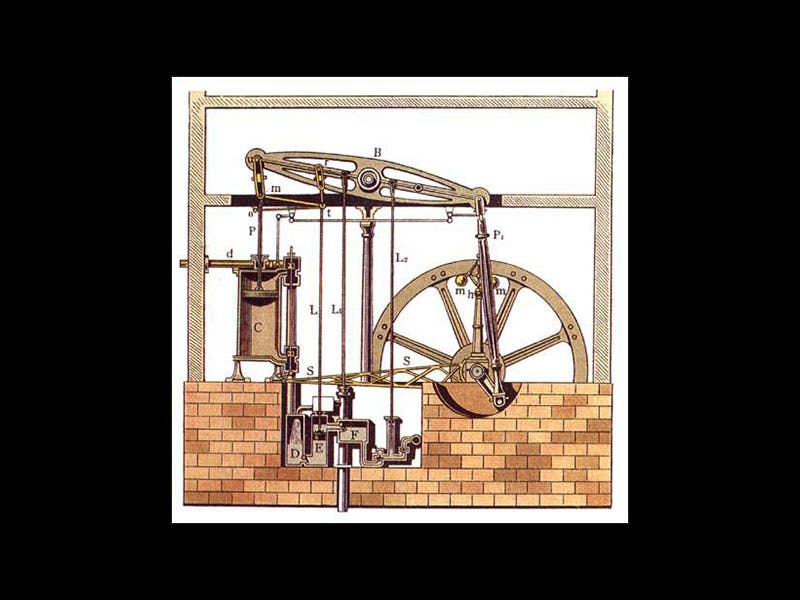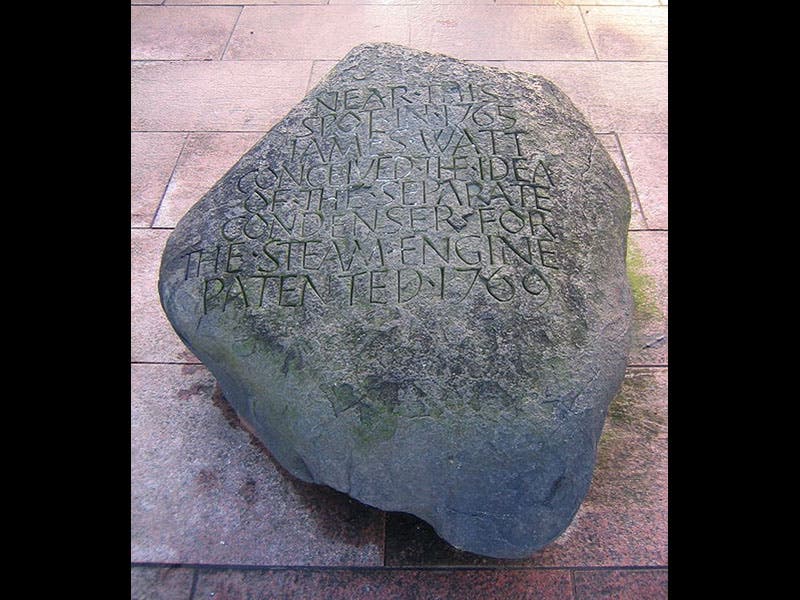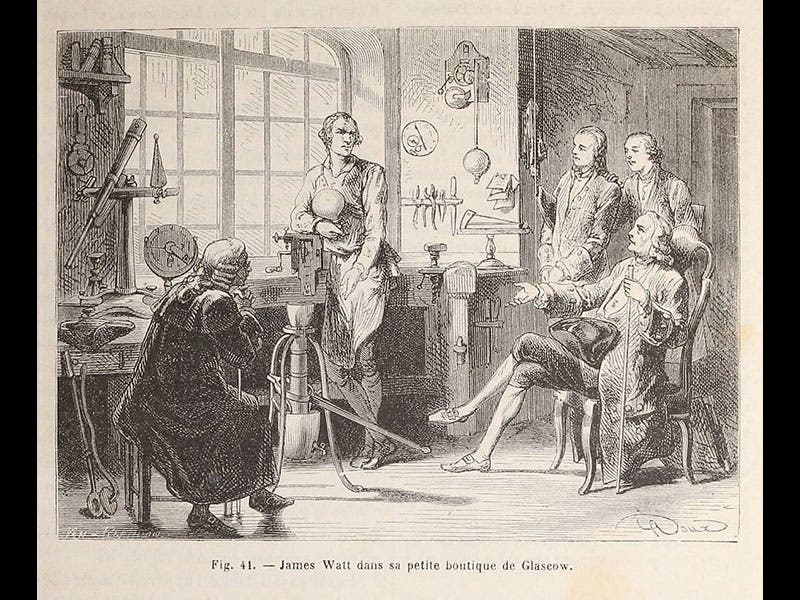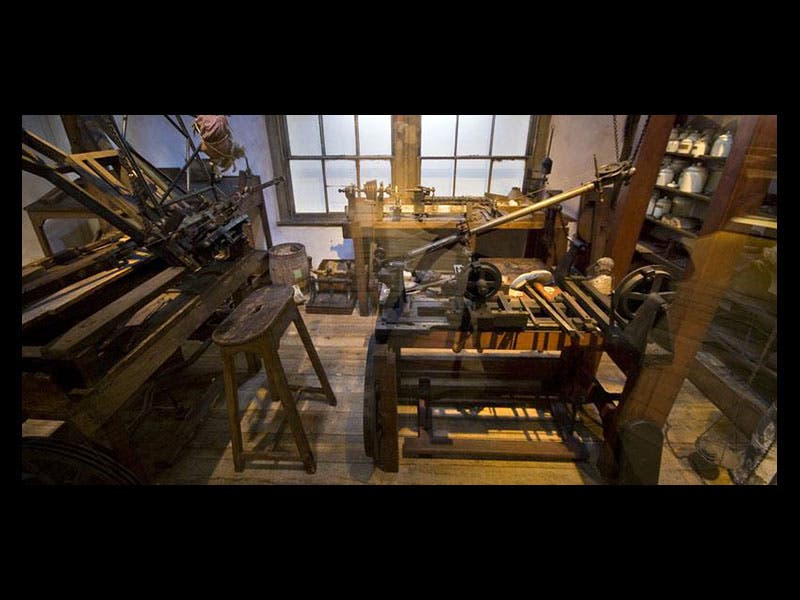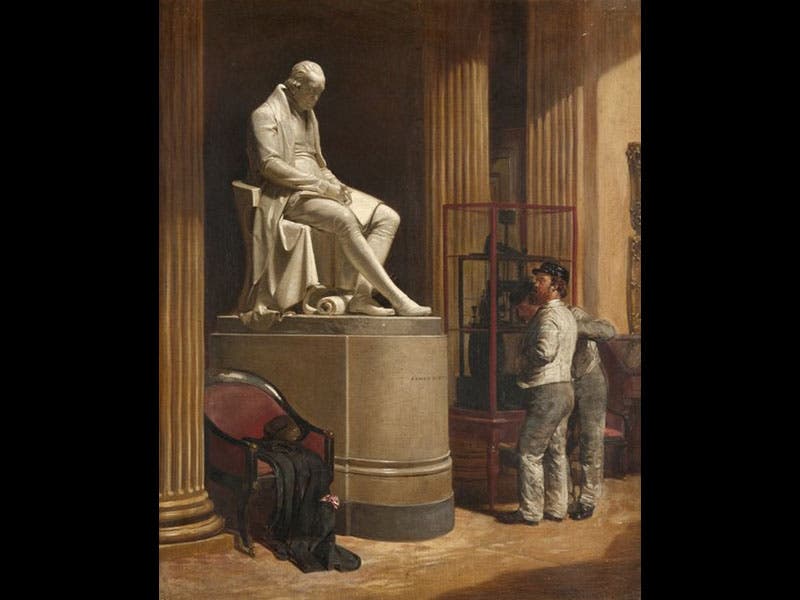Scientist of the Day - James Watt
James Watt, a Scottish inventor, was born Jan. 19, 1736. While working at Glasgow University in the 1760s, Watt devised an improved steam engine, and in the 1770s, he teamed up with the Birmingham manufacturer, Matthew Boulton, to build and market that engine. The Newcomen engine had ruled the roost for over half a century, pumping water out of mines. The Newcomen engine was quite reliable, but it was extremely inefficient and costly to run, since it used the same cylinder to do work and to condense the steam, which meant it had to be heated then cooled with every cycle. Watt had the idea of using a separate condenser to cool the steam, so that the working cylinder could stay hot. In the diagram above (second image), the power cylinder is labelled “C” and the condenser “D”. Watt also found a way to have the piston produce power on both the up and down strokes, resulting in what was called the double-acting steam engine. And he devised a way to convert the up-and-down motion of the piston to rotary motion that could turn wheels and crankshafts. Boulton and Watt produced hundreds of steam engines by 1800, and as a result, steam engines moved out of the mines and into the factories, providing power to mills, stamping tools, textile machinery, and in general giving a jump-start to what we call the Industrial Revolution.
Artifacts and objects related to Watt and his steam engine abound. Watt supposedly had his Eureka moment on Glasgow Green in 1765, when he realized that if you could arrange for condensation of the steam to take place in a separate cylinder, then the power cylinder would stay hot, and on Glasgow Green today, there is a large stone with an inscription marking the place and moment of inspiration (third image). Watt had an attic workshop in Glasgow where he did much of his tinkering (fourth image), and that workshop, with its thousands of objects, survived, and is now on display in the Science Museum, London (fifth image). The Science Museum also exhibits one of the very early Boulton & Watt engines, manufactured in 1777 and known as Old Bess. There are many statues of Watt about, most notably a large marble one at the entrance to the galleries of the Hunterian Museum in Glasgow (sixth image), with copies scattered around Glasgow. The best portrait is one by Carl von Breda in the National Portrait Gallery in London (first image). It shows Watt as a thinker rather than a tinkerer, which is quite appropriate, for Watt was a thoughtful inventor, befriended by Joseph Black and Adam Smith, and included among the membership of the Lunar Society of Birmingham, along with such notables as Boulton, Josiah Wedgwood, Erasmus Darwin, and William Withering.
Dr. William B. Ashworth, Jr., Consultant for the History of Science, Linda Hall Library and Associate Professor, Department of History, University of Missouri-Kansas City. Comments or corrections are welcome; please direct to ashworthw@umkc.edu.

